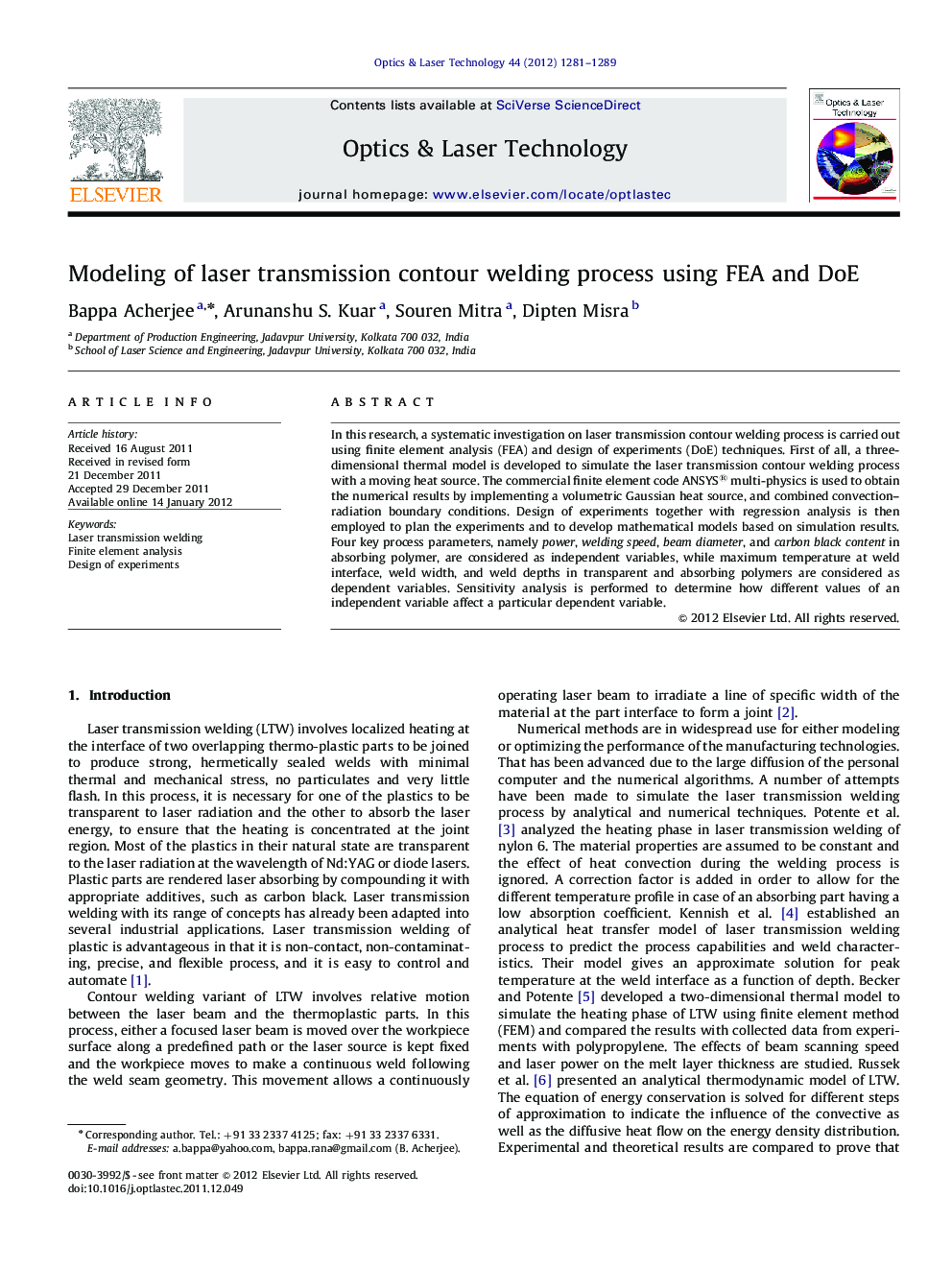| Article ID | Journal | Published Year | Pages | File Type |
|---|---|---|---|---|
| 739525 | Optics & Laser Technology | 2012 | 9 Pages |
In this research, a systematic investigation on laser transmission contour welding process is carried out using finite element analysis (FEA) and design of experiments (DoE) techniques. First of all, a three-dimensional thermal model is developed to simulate the laser transmission contour welding process with a moving heat source. The commercial finite element code ANSYS® multi-physics is used to obtain the numerical results by implementing a volumetric Gaussian heat source, and combined convection–radiation boundary conditions. Design of experiments together with regression analysis is then employed to plan the experiments and to develop mathematical models based on simulation results. Four key process parameters, namely power, welding speed, beam diameter, and carbon black content in absorbing polymer, are considered as independent variables, while maximum temperature at weld interface, weld width, and weld depths in transparent and absorbing polymers are considered as dependent variables. Sensitivity analysis is performed to determine how different values of an independent variable affect a particular dependent variable.
► A systematic investigation on laser transmission contour welding process is carried out. ► A 3-D thermal FE model has been constructed to simulate the laser transmission contour welding process. ► Central composite design of experiments is employed to plan the experimental matrix. ► Empirical models are developed based on the simulation results, using regression analysis. ► Sensitivity analysis is performed to analyze the parameter sensitivity of responses of interest.
